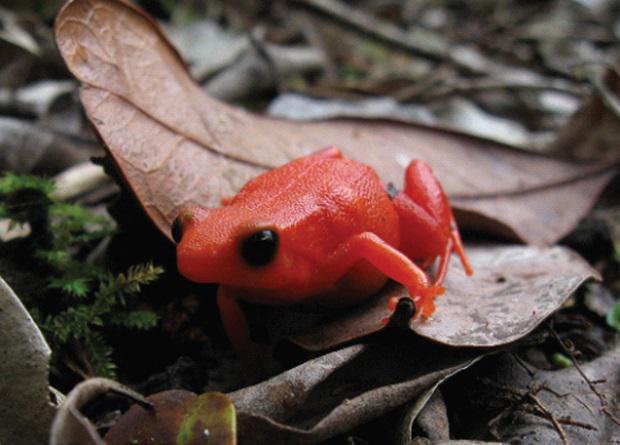Roma Randrianavelona
This project aims to secure the threatened habitats of the Critically Endangered Golden Mantella frog ‘Mantella aurantiaca’. I will develop a monitoring protocol and engage community representatives and hope to establish a model for the conservation of other threatened amphibian species in Madagascar that have restricted ranges.

Golden Mantella frog ‘Mantella aurantiaca’. © Roma.
The Golden Mantella frog ‘Mantella aurantiaca’ is one of the world’s most threatened amphibians. It is restricted to small patches of rainforest in the Moramanga district of eastern Mandagascar and is threatened by habitat degradation and collection for the pet-trade. There are less than 12 populations of this species known and I found two sites in early 2006. Whilst a group of sites in the Torotorofotsy Marsh Ramsar site receives nominal protection, all other populations are unprotected. My project will develop a conservation and monitoring programme that includes all known ‘Mantella aurantiaca’ sites with a focus on those subject to high collection pressure outside of the Ramsar site.
I will first conduct survey assessments to determine the major threats and to estimate population size. Community engagement will take the form of meetings to raise the awareness of local people. In many parts of Madagascar local communities are unaware that the animals they are familiar with are actually endemic to a very small area and I hope to harness their pride to participate in the monitoring. Regular visits to the forest fragments by local participants will lead to a reduction in forest fires and illicit collection.
The initial surveys will set the baseline from which subsequent monitoring data can be compared. The data will also be useful for the CITIES Management and Scientific Authorities in Madagascar because of trade in ‘Mantella aurantiaca’ was suspended recently because of a lack of information from the field.
My vision is to have each and every site documented and mapped, with regular monitoring and close cooperation from surrounding villages with certain sites to receive 100% protection and one or two others that may be subject to sustainable, community-agreed collection levels that are endorsed by CITES.